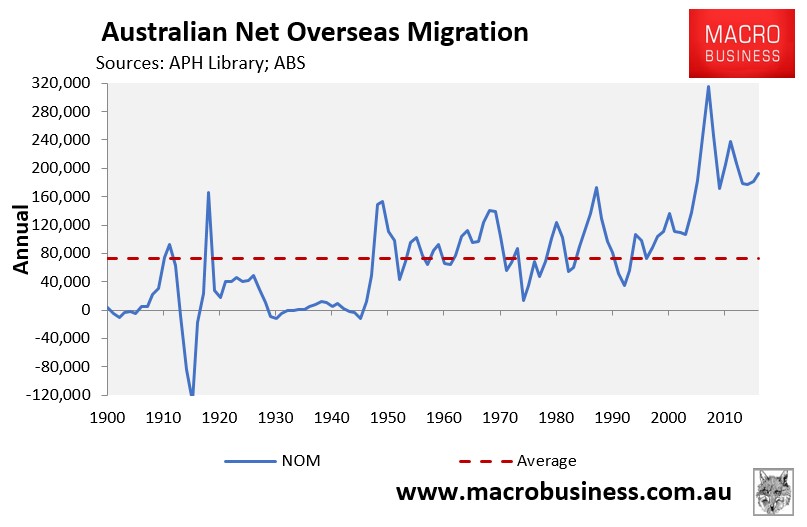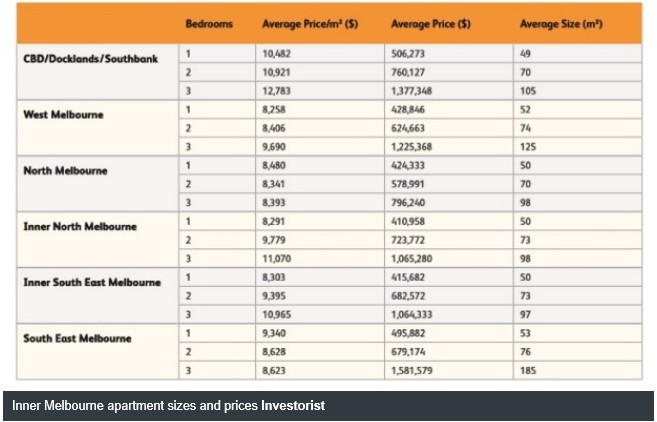Why is it that so many of Australia’s mainstream economists, as well as the Coalition, only sees solutions to Australia’s housing affordability woes on the supply-side of the housing market, while ignoring the role of demand-side policy?
A case in point is the following drivel from HSBC chief economist, Paul Bloxham:
Although [Melbourne] detached house prices are up by a strong 60 per cent over the past five years, apartment prices have only risen by 20 per cent…
This contrast between Melbourne houses and apartments helps to answer the bubble question. The root cause of the rise in housing prices is that demand has outstripped supply.
But in the case of Melbourne apartments, adequate supply has been brought to market, which has kept price gains in this market more contained…
A collection of factors on the demand side are also contributing to rising housing prices.
Low interest rates, a global search for yield, strong population growth and significant offshore demand for Australian property are all supporting demand for housing.
Distortions in Australia’s tax system, which favour rental properties as a form of personal investment, are also contributing to the investor demand.
However, the example of the cooling Melbourne apartment market illustrates that these are not the main drivers of the boom. It’s the lack of supply that is to blame…
The solution is adding to supply.
The recent experience in Melbourne may provide the answer. It may sound simple but, if you want to fix the housing affordability problem, the solution is to build affordable housing.
The inner city apartments in Melbourne are what affordable dwellings in the centre of one of the world’s most liveable cities look like.
Earth to Bloxo: basic economics tells us there are two sides to the housing equation: a demand-side and a supply-side.
If you implement a policy that raises (lowers) demand, it will raise (lower) prices and reduce (improve) affordability [other things equal].
And if you implement a policy that raises (lowers) supply, it will lower (raise) prices and increase (reduce) affordability [other things equal].
Therefore, choosing to maintain distortionary taxation policies that encourages speculative investment into established dwellings, such as negative gearing and the capital gains tax discount, will necessarily keep demand (house prices) higher than would otherwise be the case, thereby reducing housing affordability. But if you remove these distortions, affordability will necessarily improve. Ditto allowing foreign investment (and money laundering) into established dwellings.
Similarly, maintaining an immigration intake that is so far above historical norms (see next chart) will also keep demand (house prices) higher than would otherwise be the case, reducing housing affordability – especially in Sydney and Melbourne where most migrants congregate. But if you lower immigration to sensible and sustainable levels, then housing demand will necessarily decrease and affordability will improve. It’s hardly rocket science.

What is particularly frustrating about Bloxo and his ilk is that they presume that mass immigration and rapid population growth into Sydney and Melbourne is ‘natural’ and a fait accompli, rather than a deliberate policy choice by the federal government. Then they blame a shortfall of supply for the housing mess, rather than looking at excessive immigration, which has caused much of the supply-demand imbalance in the first place.
Bloxo’s claim that Melbourne’s high-rise dog boxes are the “solution” to Australia’s housing affordability woes also does not pass the laugh test.
In June last year, The AFR produced the below table showing the average price and size of apartments being built across various parts Melbourne:

As you can see, apartments in the CBD are being priced at more than $10,000 per square metre, with surrounding areas only slightly below this level.
The average price of a tiny one-bedroom apartment ranges from an astonishing $410,000 to $506,000, which rises to more than $580,000 for a two-bedroom apartment and $800,000 or more for a three-bedroom apartment. To this, you can add crippling body corporate fees.
How such price levels can credibly be described as “affordable” by Bloxo shows just how distorted debate around housing has become in Australia.

